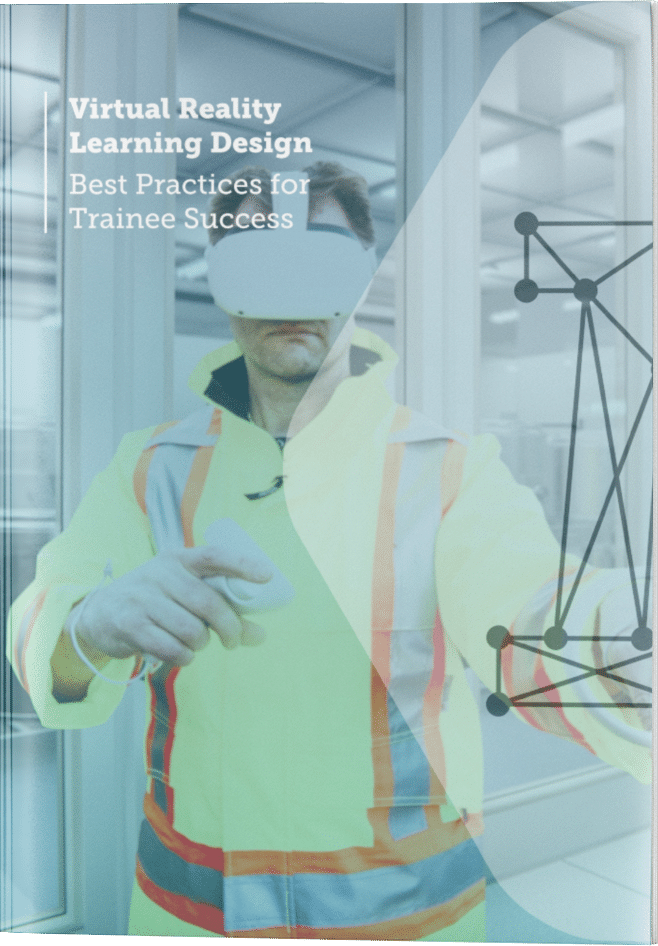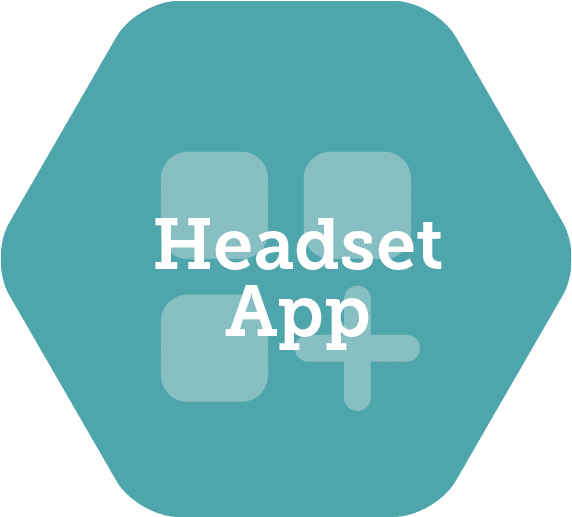As the process for designing VR continues to evolve, a few aspects have proven to be consistent. Here are a few essential features of great VR design as well as some less important areas to remember.
Comprehensive experience project planning
Comprehensive experience project planning is a must-have in VR design. The VR planning stage is the most vital part of the process. This is the space for brainstorming and ideation. It is here that you begin to answer the big questions about the experience like: What does the environment look like? What are the ambient sounds? What does it sound like when the user moves? What haptic feedback is there? What are the scenarios? What do we want the user to do in the scenario? What are the client expectations for objectives? Spend time planning the experience and documenting that plan so that as you continue to iterate during development, you have a map to reference.
VR design essentials
Clear learning objectives
Creating clearly defined learning objectives is a must-have in VR design. As you work with the client on planning the VR experience, take the time to draft and design clear learning objectives. Get extremely specific about what you want the user to get out of the experience and what you want them to be able to do after the experience.
It’s easy to become enamoured with what you can do in VR, but it’s more important to keep focused on what you want to accomplish. Focus on the way that VR can add the most value and do well. Ask questions like: How are you going to use the virtual space? What physical activities are you going to try and mimic and how will you do that? Where will you put everything to simulate the environment but also make it user-friendly? For more details on creating clear learning objectives, see the Designing and Developing VR Experiences blog.
Continue to reference these clear learning objectives during the development process. Use them as a compass as you move through multiple design and development iterations. Sometimes as you progress through versions of the experience and get feedback from the client, the direction of the experience gets derailed. Reference the learning objectives at every iteration to stay on track with what you are trying to accomplish.
Design for 3D space
Considering 3D space is a must-have in VR design. As a learning designer getting into VR, you will be working in a fully simulated 3D space. With 3D learning experiences, there is so much more area to consider. VR allows us to move to the right, left, walk across the room, and even turn around. It offers a much larger landscape with which to create engagement and interaction. If you put someone in a 3D environment but just give them text panels to interact with, you might as well have handed them a slideshow to read. With VR, you get to break through the idea that you cannot move and plan and build for them to interact through movement.
VR enhances muscle memory and triggers a different part of your brain that helps you move what you learn into long-term memory. Creating interactions that require movement deepen the learning experience and enhance the effects of VR.
Let’s consider an example of a VR experience that takes place in a hospital operating room. The room is filled with other people, equipment, medications, and tools. If you build the experience to interact with them, but you are standing in the same spot during all interactions, that experience falls flat. In a real-life operating room, movement is required for interaction to be effective. To increase impact, use the VR environment to develop an experience that mimics real events including movement, and leverages other design elements, like animation, to show things that are more difficult to physically do in a simulation.
VR design nice to haves
Sometimes VR designers get overly concerned about areas of design that are less important.
Every action mapped to the experience
Having every activity or action directly mapped to the scenario is less important in VR design. It’s easy for clients and designers to get caught up in the minutia of a task association to make it feel as real as possible. In doing this, we can easily get side-tracked and focus on elements of the experience that prove less valuable to the overall objectives.
Focus on the key actions that people need to take to meet the learning objectives. Spend less time on fine motor interactions and on actions that are assumed skills. For example, in the hospital room experience, incorporate the action of choosing the medication and administering to the patient, with less focus on the actions that are inherent to the profession, like pulling back on the needle plunger to make the medication draw. The ability to administer an injection properly is an assumed skill for a nurse. Spending time on that, rather than on the learning objectives of assessing the patient and bedside manner, may frustrate and distract the learner.
Another example is a VR experience about constructing and framing out an interior wall. It is assumed that knowing how to work a power drill is inherent to being a contractor. Unless the learning objectives are to learn how to work a power drill, there is no need to teach it. Rather, design the experience so that when the user picks up the drill, it becomes an extension of the hand. The hand disappears and the drill stays. When the user brings the drill towards the item, it automatically begins to drill, doing the job it needs to do. Sound and haptics tell the user it worked properly.
Learn about additional must-haves and less important areas of VR design in the continuation of this blog.
Looking for more information on VR design for learning?
Download our Best Practices for Trainee Success Guide for tips and tricks on designing effective learning in VR.

Latest Posts
Stay in the Know
Want to stay up-to-date with what is going on in the world of immersive training? Subscribe to the Motive Blog.
Ready to revolutionize your training program?
We’re ready to show you how seamlessly you can create, edit and deploy VR training modules. Our team is standing by to help you revolutionize your training program.





